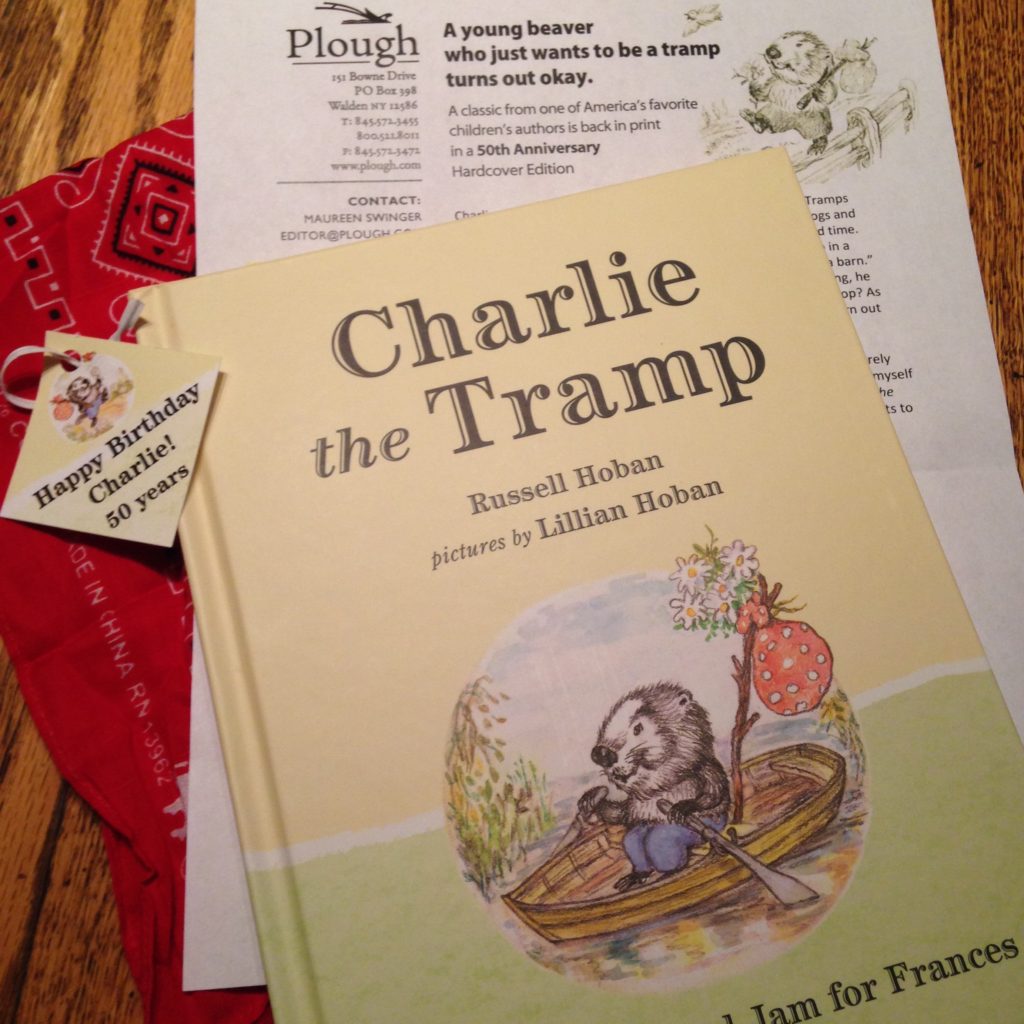Charlie the Tramp, written by Russell Hoban, illustrated by Lillian Hoban; 50th anniversary edition released October 3, 2016 by Plough Publishing House.
It’s always fun when a new book arrives from Plough Publishing. But imagine my surprise when I opened the package and this was inside:

My curiosity was piqued.
Charlie the Tramp is a classic children’s story from the 60s. Charlie is a beaver who doesn’t want to do beaver work when he grows up. Instead of practicing swimming and diving, cutting trees and log rolling, he wants to be a tramp. Charlie wants to explore the world, doing what he wants, when he wants. He admits that he might have to occasionally do a little work here and there to earn meals, but he is not going to learn all the hard work that beavers do.
And so, Charlie leaves home. He journeys not far from his own yard, sleeps outside, and comes home in the morning for breakfast. He does the chore his Mom gives him to earn breakfast but then decides to eat outside instead of at the table. This easy-going life continues on for a few days. Then, one day, Charlie hears a sound and investigates. He finds trickling water in a nearby stream.
What does he do? Does he go on his merry way? Or, does he do beaver work and build a dam in the water? Hmmm…you’ll have to read the book to find out.
This really is a charming little story with a great message about work ethic, family and independence. But, as a fifty year old book, it is also dated in its approach to gender roles and that might concern some of today’s parents. For example:
- When Grandfather recalls his own childhood mischief, Mother says, “That is how men are. They all want to be tramps.” Ouch.
- At the end of the book. Father and Grandfather are talking to Charlie and he asks where Mother is. “Mother had run back to the boat, rowed across the pond as fast as she could, and had flapjacks and maple syrup ready on the table when the men came home.” Again, a questionable moment.
Even the word “tramp” in the book title has a negative meaning today, much different than the original vagabond intent.
Are these examples a matter of political correctness gone awry or real reason for concern? It’s up to each reader to decide. The anniversary edition is a sweet throwback to a time many people will remember fondly, perhaps even recalling the book from their own childhood. On the other hand, with today’s awareness and emphasis on gender roles, some parts of the story might cause concern for other readers.
Explore other reviews and order the book here on Amazon.

Note: A copy of this book was provided by the publisher at no cost to me. In no other way did they or anyone else attempt to influence the content of this review.

